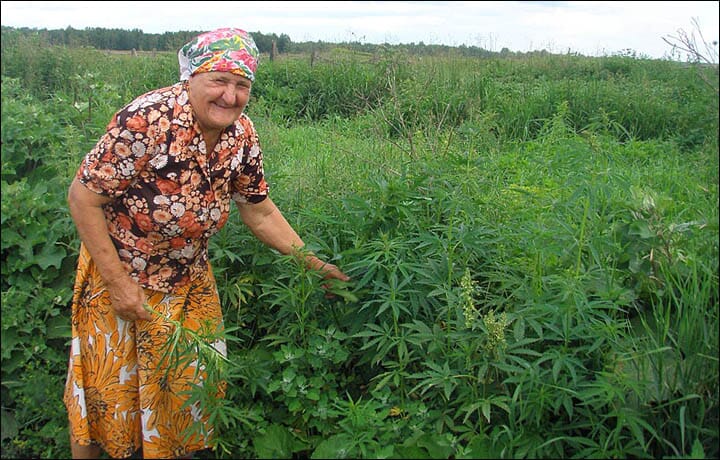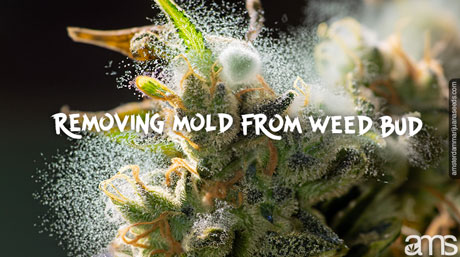
By: Juan Sebastian Chaves Gil
The cannabis-infused cuisine has transcended beyond typical sweets like chocolate cakes and muffins, extending to savory dishes from different culinary traditions around the world. This trend is gaining new momentum with the relaxation of laws in the United States, giving rise to what is now known as cannabis cuisine.
Exploring the fusion of cannabis into traditional cooking not only represents an entertaining way to spend time but also an opportunity for marijuana enthusiasts to experiment with new recipes and flavors. In this regard, Amsterdam Marijuana Seeds offers a selection of 10 favorite recipes worth trying, ranging from simple dishes to more complex options, suitable for both novices and experienced cooks.


1. Cannabis-infused butter (cannabutter)
Cannabutter carries a high amount of THC and other cannabinoids.
Making cannabis-infused butter involves decarboxylating the cannabinoids first. The ingredients include:
- Some butter
- A cup of ground cannabis.
- Decarboxylate cannabis. This typically involves preheating the oven and place ground cannabis buds on the tray. Cover the tray using a parchment paper to deter the buds from sticking on the tray
- Depending on whether the buds are new or old, it may take anywhere between 30 and 40 minutes to decarb
- Using a hand grinder, grind the decarboxylated buds
- Melt the butter
- Add your decarboxylated buds to the melted butter
- Simmer the mixture for up to 3 hours
- Allow the cannabutter to cool and allow it to strain slowly through a cheesecloth
- Refrigerate the butter for an hour or so and remove the solid butter with a knife should it form
- Infuse your butter to your favorite products and enjoy yourself.
Instructions
2. Cannabis pancakes
Yes, you read that right. Cannabis pancakes give a lively morning, especially when they harbor a healthy dose of Tetrahydrocannabinol (THC).
To make great cannabis pancakes, you will need:
- A cup of all-purpose flour
- A glass of milk
- A beaten egg
- Some sugar
- Some salt
- Batter
- Melted butter
- Two tablespoonful of baking powder
- 100 mg of pot tincture.
- To the flour, add sugar, salt, milk, egg and whisk them together
- To the mixture, mix the pot tincture and melted butter
- Switch on medium heat to your means of cooking and place a frying pan with butter
- Apply some batter on each pancake until you see some bubbling on the batter
- Keep on flipping the crepe until the pancake turns golden while the batter gets gone
- Enjoy your made-from-home cannabis pancake.
Instructions
3. Cannabis peanut butter cookies
Cannabis peanut butter is easy to prepare and takes some little time during preparation. The ingredients you will need comprise:
- Cannabutter
- All-purpose flour
- Crunchy peanut butter
- A beaten egg
- Baking powder
- Baking soda
- Some sea salt
- Some sugar and brown sugar
- Vanilla.
- Preheat your oven to 350°F and set aside two greased baking sheets
- Stir the flour sugar, sugars, salt, baking powder and baking soda in a bowl
- Beat the cannabutter, peanut butter, egg and vanilla in a separate bowl
- Drop some dough into one of the greased baking sheets and press the dough using a fork to flatten
- Bake your cookies until their top-most parts begin to crack.
Instructions
4. Cannabis banana bread
A canna banana bread can be eaten any time of the day. If you prefer to eat it during the day, be sure to prepare it using Sativa strains. On the contrary, Indica strains would be ideal for night preparation.
These are the ingredients to make your own banana bread during self-isolation:
- Melted cannabutter
- Some sugar
- Two beaten eggs
- mashed overripe bananas
- Some salt
- Baking soda
- Buttermilk
- Vanilla
- All-purpose flour.
- Preheat your oven to a temperature of 350°F
- On one large loaf pan, butter and flour the bottom
- Mix the cannabutter and sugar while adding the beaten eggs until there is a uniform blending
- Add the buttermilk and vanilla to the mashed bananas
- Sift the all-purpose flour, salt, and baking and add them to the wet mixture of mashed bananas
- Bake the loaf for 1.25 hours and insert a toothpick into the center. If it comes out clean, then the bread will be ready
- Slice it after 2 hours and enjoy your canna banana bread.
Instructions
5. Cannabis cooking oil
Cooking with canna-cooking oil could be the best oil when you try it out for the first time. Thankfully, it isn’t hard to prepare it.
You will need:
- Grass flower
- Cooking oil.
- Grind the cannabis flower
- Combine your favorite oil with the cannabis flower and heat on warm temperatures. You should, nonetheless, ensure that the temperatures don’t go past 245°F
- Store your oil after straining it. Cannabis cooking oil can stay for a shelf life of up to months but can be extended by refrigeration.


Instructions
6. Cannabis salad
You probably haven’t explored making weed salad at home. But trust us that you will like it.
You will need:
- Cannabis oil
- Minced garlic cloves
- Salt and pepper
- Lemon juice
- Olive oil
- Lettuce
- Mix the lemon juice with the minced cloves
- Add the cannabis oil to the mixture
- Season it with salt and pepper
- Place the lettuce in a bowl and toss it with dressing
- Your cannabis Caesar salad is now ready for consumption.
Instructions
7. Cannabis brownies
Making these marijuana edibles shouldn’t be daunting. See this favorite recipe for preparing canna brownies, and you will surely like it.
Ingredients
- Two eggs
- Cannabis-infused oil
- Salt
- Baking powder
- Baking soda
- All-purpose flour.
- Preheat your oven at 390°F and place a big buttered pan
- Mix the cannabis oil with the beaten eggs and add some sugar
- Sift the flour together with baking powder and salt
- Pour batter into the baking dish and bake for 30 minutes or so until edges start pulling away from the pan
- Put these edibles on a wire rack and allow them to cool. You can, then, enjoy your brownies.
Instructions
8. Cannabis chocolate chip walnuts
This delicacy is easy to prepare and takes a little time to be ready.
You will need:
- Cannabutter
- Some sugar
- A beaten egg
- Baking powder
- Chocolate chips
- Walnuts
- Baking soda
- Some salt
- Unbleached flour.
- Preheat the oven to 350°F
- Mix the cannabutter and sugar
- Mix the egg with flour, baking soda, salt, and baking powder in a separate bowl
- Add the walnuts and chocolate chips to this mixture
- Form doughs from the dough and place it on a cookie sheet while using a parchment paper to avoid stickiness
- Place the cookies in a freezer to let them be firm enough
- Bake these cookies until they turn golden brown
- Cool the cookies for 30 minutes and enjoy your cannabis edibles.
Instructions
9. Cannabis-infused bacon
Do you love bacon? What if you make yours during the self-isolation period? Well, it shouldn’t be hard. See the basics below.
You will need:
- Sliced bacon
- Ground cannabis flower.
- Preheat your oven at 225°F.
- Spread the ground cannabis flower on the cookie sheet and start baking it. It should be fine after 45 minutes
- Place your preferred number of bacon slices on another cookie sheet (should be ungreased)
- Using a salt shaker, sprinkle the baked cannabis over the bacon strips
- Place the bacon strips on the oven and bake them for 10 minutes.
- Remove the strips from the oven and sprinkle the canna flower on the other side
- Bake them for ten more minutes
- Allow your weed bacon to cool and enjoy your delicacy.
Instructions
10. Cannabis bars
Popularly referred to as cannabis-infused Nanaimo bars, these edibles should be ready within an hour.
The ingredients include:
- Unsalted cannabutter
- Sugar
- Cocoa powder
- Shredded coconut
- A beaten egg
- Chopped almonds.
- Preheat your oven to 350°F
- Melt the cannabutter and put it aside
- Add the other ingredients to a mixing bowl
- Pour the melted butter on the top and mix it with the ingredients in the mixing bowl
- Press the mixture in a pan and bake it until it appears brown
- Allow your cannabis-infused Nanaimo bars to cool and enjoy yourself.


Instructions
- Preheat your oven to 350°F
- Melt the cannabutter and put it aside
- Add the other ingredients to a mixing bowl
- Pour the melted butter on the top and mix it with the ingredients in the mixing bowl
- Press the mixture in a pan and bake it until it appears brown
- Allow your cannabis-infused Nanaimo bars to cool and enjoy yourself.
Did we miss a favorite recipe of yours? Leave it down below in the comments! Stay happy, stay healthy.











































